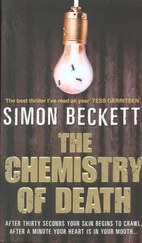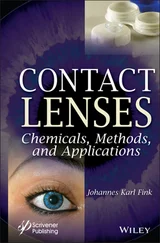2 Chapter 2Figure 2.1 1H,1H,2H,2H-Perfluorodecyltrichlorosilane.Figure 2.2 Antibiotics.Figure 2.3 Branched chain monomers.Figure 2.4 Crosslinking agents.Figure 2.5 Adsorption isotherms of colloids and activated carbon (30).Figure 2.6 Monomers for esterification reaction.Figure 2.7 N -Isopropylmethacrylamide.Figure 2.8 N -Methylaniline.Figure 2.9 Tobramycin.Figure 2.10 Aqueous monomers.Figure 2.11 2-(Methacryloyloxy)ethyl dimethyl-(3-sulfopropyl) ammonium hyd...
3 Chapter 3Figure 3.1 Components for vinyl macromonomers.Figure 3.2 Polymethine compounds.Figure 3.3 Dithioesters.Figure 3.4 Xanthates.Figure 3.5 Synthesis of 4-cyano-4-[(thiobenzoyl)sulfanyl]pentanoic acid (4...Figure 3.6 Monomers for RAFT polymerization.Figure 3.7 Laccase.Figure 3.8 Nisin.Figure 3.9 Contact Angle Versus Soaking Time (101).
4 Chapter 4Figure 4.1 Recovered products.Figure 4.2 Products from chemical recycling of PET.
5 Chapter 5Figure 5.1 Atenolol.Figure 5.2 Acetaminophen.Figure 5.3 Methyl violet.Figure 5.4 Colors.
6 Chapter 6Figure 6.1 Avermectin B1a.Figure 6.2 Atrazine.Figure 6.3 Methyl paraoxon.Figure 6.4 Hydrolysis kinetics of methyl paraoxon (3).Figure 6.5 2,4-Dichlorophenoxyacetic acid.Figure 6.6 Thiram.Figure 6.7 Pesticides.Figure 6.8 Agrochemicals.Figure 6.9 Dichlorvos.Figure 6.10 Brilliant cresyl blue.Figure 6.11 Materials for an amperometric carbaryl biosensor.Figure 6.12 Compounds for Electrochemical Sensing.Figure 6.13 Phoxim .Figure 6.14 Compounds for molecularly imprinted sensor.Figure 6.15 Thiamethoxam.
7 Chapter 7Figure 7.1 1H,1H,2H,2H-perfluorooctyl trimethoxysilane.Figure 7.2 Poly(9,9-dioctylfluorene- alt -benzothiadiazole).Figure 7.3 poly [9,9-dioctyl fluorene-9,9-(bis(3,( N , N -dimethylamino)- N -eth...Figure 7.4 Bromophenylethynyl trimethylsilane.Figure 7.5 Bis(4-methoxyphenyl) maleimide.Figure 7.6 Tris(1-phenylisoquinoline)iridium(III).Figure 7.7 PF-CzBTO structure.Figure 7.8 Monomers for PEDOT and PSS.Figure 7.9 N -([1,1’-Biphenyl]-4-yl)- N -(9,9-dimethyl-9H-fluoren-2-yl)-9,9’-...Figure 7.10 Acridine monomers.Figure 7.11 1-(4-Bromophenyl)-2-phenylbenzimidazole.Figure 7.12 Thiophene and triazole derivatives.Figure 7.13 Meldrum’s acid, 2,2-dimethyl-1,3-dioxane-4,6-dione.
8 Chapter 8Figure 8.1 Activating reagents.Figure 8.2 Histamine.
9 Chapter 9Figure 9.1 1,2-Dioleoyloxy-3-trimethylammonium propane.Figure 9.2 Cholesterol.Figure 9.3 Hyaluronic acid.Figure 9.4 Synthesis of a biodegradable conducting monomer (13).Figure 9.5 2-(Trichloroacetyl)pyrrole.Figure 9.6 Isobornyl acrylate.Figure 9.7 Uptake at room temperature in weight percent of PLA (41).
1 Cover
2 Table of Contents
3 Begin Reading Preface Preface This book focuses on the chemistry of environmental engineering and applications. Special attention is receiving the use of polymers in this field. Polymers can be created with special properties, such as viscoelasticity, interpenetrating networks, and others. Also, a polymer modified asphalt with special properties can be created. Further, another issue is the creation of polymers with special bacterial adhesion properties. The formation of reverse osmosis membranes that do not show biofouling are of importance for water purification procedures. In another chapter, special processing methods are detailed, such as atom transfer radical polymerization, enzymatic polymerization, plasma treatment, and several other methods. Recycling methods are now important environmental issues for several types of materials, such as PET Bottles, tire rubbers, asphalt compositions, and other engineering resins. Also, wastewater treatment has been detailed. Here, the types of contaminants, such as microplastics, organic dyes, pharmaceutical residues are described and also special methods for proper removal are detailed. Also the types of adsorbents, including also biosorbents are detailed. Still another important issue for environmental engineering chemistry are pesticides. Here also the development and fabrication of special sensors for the detection of certain pesticides are detailed. In a further special chapter, electrical uses are detailed. These include photovoltaic materials, solar cells, energy storage and dielectric applications, light emitting polymers, and fast charging batteries. The recent issues of food engineering, such as food ingredient tracing, protein engineering, biosensors and electronic tongues have been detailed. Finally, medical uses have been described. These fields include drug delivery, tissue engineering, porous coatings and also the special methods of fabrication of such materials. The text focuses mainly on the literature of the past decade. Beyond education, this book will serve the needs of industry engineers and specialists who have only a passing contact with the plastics and composites industries but need to know more.
1 ii Scrivener Publishing 100 Cummings Center, Suite 541J Beverly, MA 01915-6106 Publishers at Scrivener Martin Scrivener ( martin@scrivenerpublishing.com ) Phillip Carmical ( pcarmical@scrivenerpublishing.com )
2 iii
3 iv This edition first published 2020 by John Wiley & Sons, Inc., 111 River Street, Hoboken, NJ 07030, USA and Scrivener Publishing LLC, 100 Cummings Center, Suite 541J, Beverly, MA 01915, USA © 2020 Scrivener Publishing LLC For more information about Scrivener publications please visit www.scrivenerpublishing.com . All rights reserved. No part of this publication may be reproduced, stored in a retrieval system, or transmitted, in any form or by any means, electronic, mechanical, photocopying, recording, or otherwise, except as permitted by law. Advice on how to obtain permission to reuse material from this title is available at http://www.wiley.com/go/permissions . Wiley Global Headquarters 111 River Street, Hoboken, NJ 07030, USA For details of our global editorial offices, customer services, and more information about Wiley products visit us at www.wiley.com . Limit of Liability/Disclaimer of Warranty While the publisher and authors have used their best efforts in preparing this work, they make no representations or warranties with respect to the accuracy or completeness of the contents of this work and specifically disclaim all warranties, including without limitation any implied warranties of merchantability or fitness for a particular purpose. No warranty may be created or extended by sales representatives, written sales materials, or promotional statements for this work. The fact that an organization, website, or product is referred to in this work as a citation and/or potential source of further information does not mean that the publisher and authors endorse the information or services the organization, website, or product may provide or recommendations it may make. This work is sold with the understanding that the publisher is not engaged in rendering professional services. The advice and strategies contained herein may not be suitable for your situation. You should consult with a specialist where appropriate. Neither the publisher nor authors shall be liable for any loss of profit or any other commercial damages, including but not limited to special, incidental, consequential, or other damages. Further, readers should be aware that websites listed in this work may have changed or disappeared between when this work was written and when it is read. Library of Congress Cataloging-in-Publication Data ISBN 978-1-119-70774-5 Cover image: Pixabay.Com Cover design by Russell Richardson
4 xi Preface Preface This book focuses on the chemistry of environmental engineering and applications. Special attention is receiving the use of polymers in this field. Polymers can be created with special properties, such as viscoelasticity, interpenetrating networks, and others. Also, a polymer modified asphalt with special properties can be created. Further, another issue is the creation of polymers with special bacterial adhesion properties. The formation of reverse osmosis membranes that do not show biofouling are of importance for water purification procedures. In another chapter, special processing methods are detailed, such as atom transfer radical polymerization, enzymatic polymerization, plasma treatment, and several other methods. Recycling methods are now important environmental issues for several types of materials, such as PET Bottles, tire rubbers, asphalt compositions, and other engineering resins. Also, wastewater treatment has been detailed. Here, the types of contaminants, such as microplastics, organic dyes, pharmaceutical residues are described and also special methods for proper removal are detailed. Also the types of adsorbents, including also biosorbents are detailed. Still another important issue for environmental engineering chemistry are pesticides. Here also the development and fabrication of special sensors for the detection of certain pesticides are detailed. In a further special chapter, electrical uses are detailed. These include photovoltaic materials, solar cells, energy storage and dielectric applications, light emitting polymers, and fast charging batteries. The recent issues of food engineering, such as food ingredient tracing, protein engineering, biosensors and electronic tongues have been detailed. Finally, medical uses have been described. These fields include drug delivery, tissue engineering, porous coatings and also the special methods of fabrication of such materials. The text focuses mainly on the literature of the past decade. Beyond education, this book will serve the needs of industry engineers and specialists who have only a passing contact with the plastics and composites industries but need to know more.
Читать дальше












